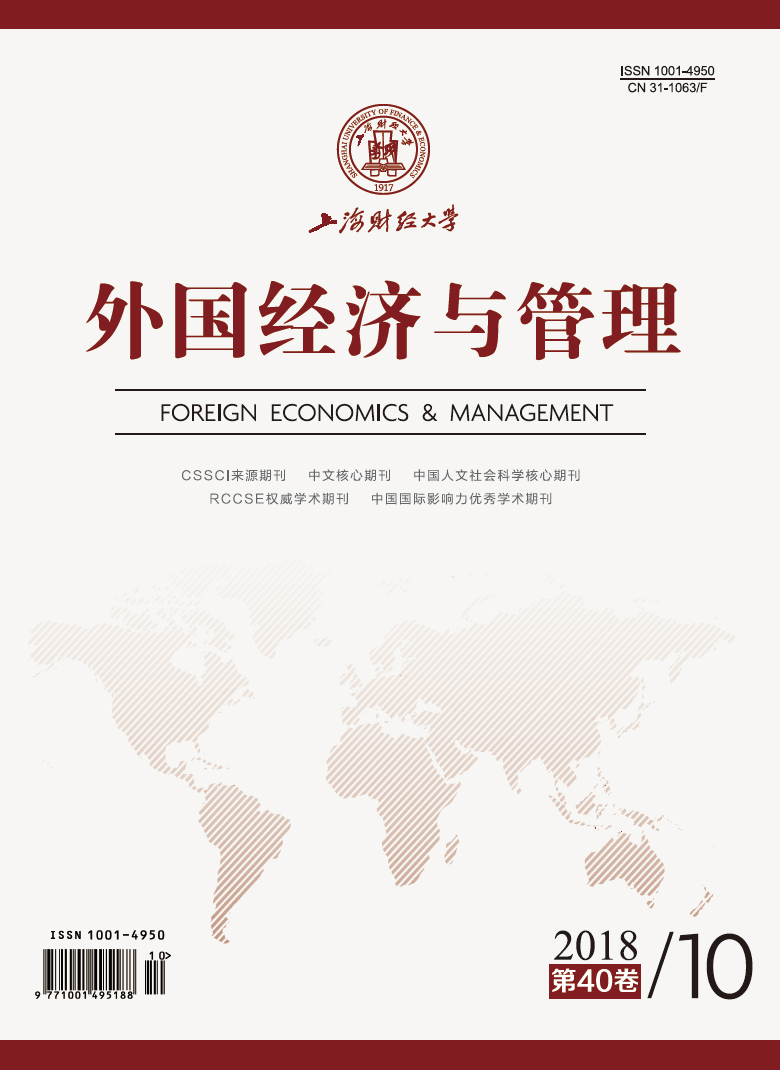教练型领导是提升下属学习、工作能力与绩效的一系列实践过程,对创造力的提升具有重要指导意义,但是这方面的理论研究严重滞后于实践发展,教练型领导对团队创造力影响的研究尤为匮乏。本文基于社会学习理论并考虑学习导向情境,构建了教练型领导对团队创造力的影响机制模型,以来自团队主管与团队成员配对的73套样本,通过层级回归来检验假设。结果表明,教练型领导与团队创造力显著正相关,但这种影响是通过双元学习的中介作用发挥的。此外,团队学习目标导向调节着上述关系,具体地,在高学习目标导向的团队中,教练型领导通过双元学习影响团队创造力的中介效应显著;而在低学习目标导向的团队中,这一中介效应不显著。本文的研究结论不仅有助于丰富教练型领导影响效果的理论成果,而且为管理者有效提升团队创造力提供了新的参考与见解。
教练型领导、双元学习与团队创造力:团队学习目标导向的调节作用
摘要
参考文献
3 刘新梅, 韩骁, 白杨, 等. 控制机制、组织双元与组织创造力的关系研究[J]. 科研管理,2013, (10): 1-9 DOI:10.3969/j.issn.1000-2995.2013.10.001
6 许晖, 李文. 高科技企业组织学习与双元创新关系实证研究[J]. 管理科学,2013, (4): 35-45 DOI:10.3969/j.issn.1674-747X.2013.04.009
7 徐莉. 教练型领导的行为及适用情境分析[J]. 中国青年政治学院学报,2008, (2): 113-117 DOI:10.3969/j.issn.1002-8919.2008.02.023
8 韵江, 卢从超, 杨柳. 双元学习与创造力对绩效的影响——一个团队层面的研究[J]. 财经问题研究,2015, (5): 3-11 DOI:10.3969/j.issn.1000-176X.2015.05.001
9 赵红丹, 彭正龙. 服务型领导与团队绩效: 基于社会交换视角的解释[J]. 系统工程理论与实践,2013, (10): 2524-2532 DOI:10.12011/1000-6788(2013)10-2524
11 朱秀梅, 孔祥茜, 鲍明旭. 学习导向与新企业竞争优势: 双元创业学习的中介作用研究[J]. 研究与发展管理,2014, (2): 9-16 DOI:10.3969/j.issn.1004-8308.2014.02.002
12 Amabile T M. The social psychology of creativity: A componential conceptualization[J]. Journal of Personality and Social Psychology,1983, 45(2): 357-376 DOI:10.1037/0022-3514.45.2.357
13 Atuahene-Gima K, Murray J Y. Exploratory and exploitative learning in new product development: A social capital perspective on new technology ventures in China[J]. Journal of International Marketing,2007, 15(2): 1-29 DOI:10.1509/jimk.15.2.1
14 Baker W E, Sinkula J M. The complementary effects of market orientation and entrepreneurial orientation on profitability in small businesses[J]. Journal of Small Business Management,2009, 47(4): 443-464 DOI:10.1111/jsbm.2009.47.issue-4
15 Bandura A. Aggression: A social learning analysis[M]. Englewood Cliffs, NJ: Prentice-Hall, 1973.
16 Baron R M, Kenny D A. The moderator-mediator variable distinction in social psychological research: Conceptual, strategic, and statistical considerations[J]. Journal of Personality and Social Psychology,1986, 51(6): 1173-1182 DOI:10.1037/0022-3514.51.6.1173
17 Buljac-Samardzic M, van Woerkom M. Can managers coach their teams too much?[J]. Journal of Managerial Psychology,2015, 30(3): 280-296 DOI:10.1108/JMP-12-2012-0380
18 Burgelman R A, Grove A S. Let chaos reign, then rein in chaos-repeatedly: Managing strategic dynamics for corporate longevity[J]. Strategic Management Journal,2007, 28(10): 965-979 DOI:10.1002/(ISSN)1097-0266
19 Chen M H, Chang Y C. The dynamics of conflict and creativity during a project’s life cycle: A comparative study between service-driven and technology-driven teams in Taiwan[J]. International Journal of Organizational Analysis,2005, 13(2): 127-150 DOI:10.1108/eb029001
20 Edmondson A. Psychological safety and learning behavior in work teams[J]. Administrative Science Quarterly,1999, 44(2): 350-383 DOI:10.2307/2666999
21 Edwards J R, Lambert L S. Methods for integrating moderation and mediation: A general analytical framework using moderated path analysis[J]. Psychological Methods,2007, 12(1): 1-22 DOI:10.1037/1082-989X.12.1.1
22 Ellinger A D, Ellinger A E, Keller S B. Supervisory coaching behavior, employee satisfaction, and warehouse employee performance: A dyadic perspective in the distribution industry[J]. Human Resource Development Quarterly,2003, 14(4): 435-458 DOI:10.1002/(ISSN)1532-1096
24 Gong Y P, Kim T Y, Lee D R, et al. A multilevel model of team goal orientation, information exchange, and creativity[J]. Academy of Management Journal,2013, 56(3): 827-851 DOI:10.5465/amj.2011.0177
25 Hagen M S. Managerial coaching: A review of the literature[J]. Performance Improvement Quarterly,2012, 24(4): 17-39 DOI:10.1002/piq.v24.4
26 Hirst G, Van Knippenberg D, Zhou J. A cross-level perspective on employee creativity: Goal orientation, team learning behavior, and individual creativity[J]. Academy of Management Journal,2009, 52(2): 280-293 DOI:10.5465/amj.2009.37308035
27 Kim S. Assessing the influence of managerial coaching on employee outcomes[J]. Human Resource Development Quarterly,2014, 25(1): 59-85 DOI:10.1002/hrdq.21175
28 March G J. Exploration and exploitation in organizational learning[J]. Organization Science,1991, 2(1): 71-87 DOI:10.1287/orsc.2.1.71
29 Prieto-Pastor I, Martin-Perez V. Does HRM generate ambidextrous employees for ambidextrous learning? The moderating role of management support[J]. The International Journal of Human Resource Management,2015, 26(5): 589-615 DOI:10.1080/09585192.2014.938682
30 Sarin S, McDermott C. The effect of team leader characteristics on learning, knowledge application, and performance of cross-functional new product development teams[J]. Decision Sciences,2003, 34(4): 707-739 DOI:10.1111/deci.2003.34.issue-4
31 Shalley C E, Zhou J, Oldham G R. The effects of personal and contextual characteristics on creativity: Where should we go from here?[J]. Journal of Management,2004, 30(6): 933-958 DOI:10.1016/j.jm.2004.06.007
32 Vandewalle D. Development and validation of a work domain goal orientation instrument[J]. Educational and Psychological Measurement,1997, 57(6): 995-1015 DOI:10.1177/0013164497057006009
引用本文
赵红丹, 刘微微. 教练型领导、双元学习与团队创造力:团队学习目标导向的调节作用[J]. 外国经济与管理, 2018, 40(10): 66-80.
导出参考文献,格式为:
上一篇:知行合一的悖论与张力
下一篇:企业国内多元化与企业国际化速度





 8859
8859  12695
12695

